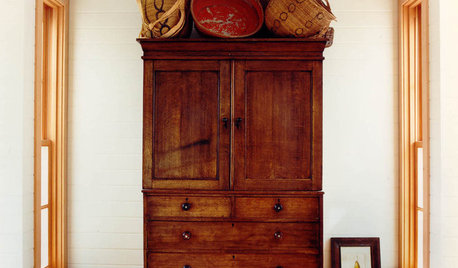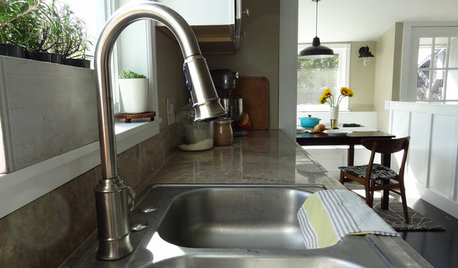These instructions were kindly submitted by members, Thanks to all who contributed.
INSTRUCTIONS FOR MAKING A HYPERTUFA TROUGH OR POTS
This quantity will make 1 -12" x 14" x 6" rectangular container OR 2 - 12" x 12" pots
Cover the bottom of a plastic bin or bowl with a large trash bag. Secure with a large rubber band. Place upside down on a 36" x 36" piece of plywood.
OR - place a large plastic flower pot in the bottom of a plastic bag - roll the top of the bag down below the top edge of the pot. Have a smaller pot ready to place inside the larger one, leaving about an inch or more of clearance between them.
Be sure to wear protective gloves and a mask.
MIXING:
Using a 2 quart measuring container:
2 containers PERLITE
1½ containers PEAT MOSS
2 containers (dry) PORTLAND CEMENT
½ container Coarse SAND
1 large handful FIBREMESH
1½ 2 containers WATER
Mix Perlite and Peat Moss together well in a large container or wheelbarrow, breaking up any large lumps. Add the other dry ingredients and mix together thoroughly before adding any water.
Gradually add up to 2 containers of water, mixing thoroughly from the bottom of the mixing container. The mixture should adhere to itself, but should not "ooze" water. Add the last half container very gradually until the mix is just workable. Do not use more than 2 containers of water.
BUILDING THE TROUGH:
Build the mix around the base of the container and gradually build up the sides and over the top. Keep the depth even all over (about 1½ inches) Use a thin "test" dowel to check the thickness (experience has shown that particular attention needs to be paid to the corners - use the measuring stick!!). Keep the base as flat and smooth as you can. Smooth the surface with wet fingers but do not overdo with the water. Once covered with the mix, place dowels upright in base to form drainage holes. Cover the entire construction with another trash bag to keep moist as it cures.
After three to four days, remove the container from the mold and the dowels from the drainage holes. Make sure the drainage holes are clear. Use a wire brush to smooth the surface and the rim, and tools (sharp knife/chisel/saw) to carve away obvious blemishes. Treat with respect at this stage! Re-cover with plastic - allowing the hypertufa to "cure" slowly creates the strongest troughs. Keep wrapped in plastic for a month at room temperature. Allow to dry completely while exposed to the elements (hose it down if it doesn't rain for a few days) then use a blow torch gently to remove any fibremesh "whiskers."
BUILDING A POT:
After placing the large pot in a large plastic bag, press a 1 1/2" layer of the mix firmly into the bottom of the pot. Place the smaller pot inside and gradually add mix between the pots, pressing it firmly into place as you fill and working it into the space equally as you go. Fill to the brim and smooth with wet fingers. Place a large dowel in the base for drainage. Draw the plastic bag up over the pot(s) and tuck it down inside to enclose the pot(s) completely while the mix cures.
Allow to cure for three days, then carefully remove the hypertufa pot from the molds. Brush with a wire brush to smooth the surface and the rim. Use tools (sharp knife/chisel/saw) to carve away obvious blemishes. Remember, treat it with respect - it can easily break at this stage! Continue to cure slowly under plastic for a month. Allow to air dry completely then use a blowtorch gently to remove any fibremesh "whiskers."
WAYS TO "AGE" THE TROUGH PREMATURELY:
1. use boiled rice water brushed and poured over the trough
2. brush yogurt or buttermilk on it
3. use a mixture of manure and water poured over the trough
4. apply liquid fertilizer with a watering can. Moss and lichen will adhere to the surface more easily
5. blend moss or lichen from the garden with some buttermilk in your blender and brush over the surface
6. spray the outside with milk
AFTER YOUR TROUGH HAS CURED:
The slower and longer your trough is allowed to dry, the stronger it will be. Allow the trough to "weather" outdoors (hose it off if it doesn't rain fairly frequently) for several months, if possible, to leach out free lime; or temporarily block up the drainage holes and fill the trough with a wine-colored solution of Potassium Permanganate for 24 hrs to neutralize the lime (½ oz. of crystals to 3 gallons water). Afterwards lightly scrub the inside with a wire brush. Use the waiting time to assemble suitable plants.
Variations on a theme:
The formula for making troughs is inexact. If the ingredients are used in a ratio of 1 part cement to 6 parts non-cement, the troughs will be durable. A small amount of coarse sand and a handful of fibremesh are essential ingredients to bond and reinforce the cement.
Vermiculite or Diatomaceous Earth may also be included or substituted.
Concrete dye may be added to color the mixture.
The exterior of the trough can be covered with Peat moss, Sand or Diatomaceous Earth before curing to modify the surface texture.
"Feet" for the troughs can be made from any left over mix in small 2"-4" flower pots.
Rocks can also be used to raise the troughs for display and to ensure good drainage.













Related Discussions
Good tree for a beginner in zone 10
Q
I'm a beginner...I desperately need some expertise
Q
Good Beginner Everbearing Pepper.
Q
Good cookbook for beginners?
Q